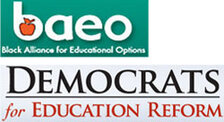
Gov. Rick Snyder aims to provide students with more learning opportunities by increasing the number of charter schools, expanding the “schools-of-choice” program and providing more access to online courses. While many parents and students will benefit from these reforms, the governor and Legislature shouldn’t settle for just these improvements. They should also empower more parents to take advantage of the opportunities provided by Michigan’s diverse array of private and independent schools.
The Wall Street Journal recently declared 2011 to be “The Year of School Choice,” citing the fact that 13 states have created or expanded their school choice initiatives so far this year. Most of these programs provide publicly financed assistance to parents who enroll their kids in private schools. In fact, three of these states border Michigan: Indiana created the country’s largest school voucher program; Ohio tripled the size of its voucher program; and Wisconsin expanded the Milwaukee voucher program and created a new one as well.
In addition to the 13 states, 29 others are currently considering legislation that would expand parents’ ability to opt for private schools, according to the American Federation for Children. Among these states are Illinois, Minnesota, Pennsylvania and Iowa. Michigan is surrounded by states ready to increase educational freedom, and, one of only eight states not considering doing the same.
Gov. Snyder and the Legislature should adopt private school choice as part of the education reform agenda for three simple reasons: Parents want more options, voucher and tuition tax credit programs save money, and research demonstrates that these programs improve outcomes for students in both private and public schools.
More parents are recognizing that the school assigned to them by the government is not necessarily the best fit for their kids. According to the National Center for Education Statistics, the percentage of students enrolled in a school of their parents’ choosing rose from 20 percent in 1993 to 29 percent in 2007. Not surprisingly, parents participating in private school choice programs consistently report that they are very satisfied with their children’s schools.
Private school choice programs also save taxpayers money. For instance, Arizona taxpayers paid on average about $8,500 per student enrolled in their public schools in 2008, but only about $1,900 for each student participating in that state’s tuition tax credit program. The voucher program in Washington, D.C., costs taxpayers only about one-third as much per pupil as the city’s public schools.
The empirical evidence on voucher and tax credit programs is thoroughly one-sided: Nine of 10 random assignment studies of voucher programs show that student outcomes improve for participants. Of the 19 empirical studies testing the impact of voucher programs on public school students, 18 found a positive impact. When public schools are given incentives to improve or lose students to competing private schools, they respond positively.
To be fair, bringing private school choice to Michigan is a monumental task. This state’s constitution explicitly forbids the use of publicly funded vouchers or tax credits to support private school enrollment. Eliminating this 40-year-old restriction would require a ballot initiative, which would be undeniably difficult. But it wouldn’t be impossible, especially if there were gubernatorial and legislative leadership behind it.
Of course, there would be other obstacles to overcome. Legally privileged government employee unions, like the Michigan Education Association, view expanded parental choice as a threat to their monopoly of taxpayer-funded schooling and will do just about anything to protect their turf.
While these obstacles may seem insurmountable, other states are obviously overcoming them, and in many cases doing so with bipartisan support. School choice has become much less partisan in recent years as many Democrats, especially those representing districts with a high number of failing schools, recognize that school choice can provide an immediate benefit to their constituents. Groups like Democrats for Education Reform and the Black Alliance for Educational Options have been powerful advocates for more choice as well.
Gov. Snyder has repeatedly said that he wants to make Michigan into a welcoming environment for businesses in order get this state’s economy back on track. The governor should work to make Michigan an inviting place for parents as well, and the best way to do that is to create more educational opportunities for their children.
#####
Michael Van Beek is director of educational policy at the Mackinac Center for Public Policy, a research and educational institute headquartered in Midland, Mich. Permission to reprint in whole or in part is hereby granted, provided that the author and the Center are properly cited.

The Mackinac Center for Public Policy is a nonprofit research and educational institute that advances the principles of free markets and limited government. Through our research and education programs, we challenge government overreach and advocate for a free-market approach to public policy that frees people to realize their potential and dreams.
Please consider contributing to our work to advance a freer and more prosperous state.